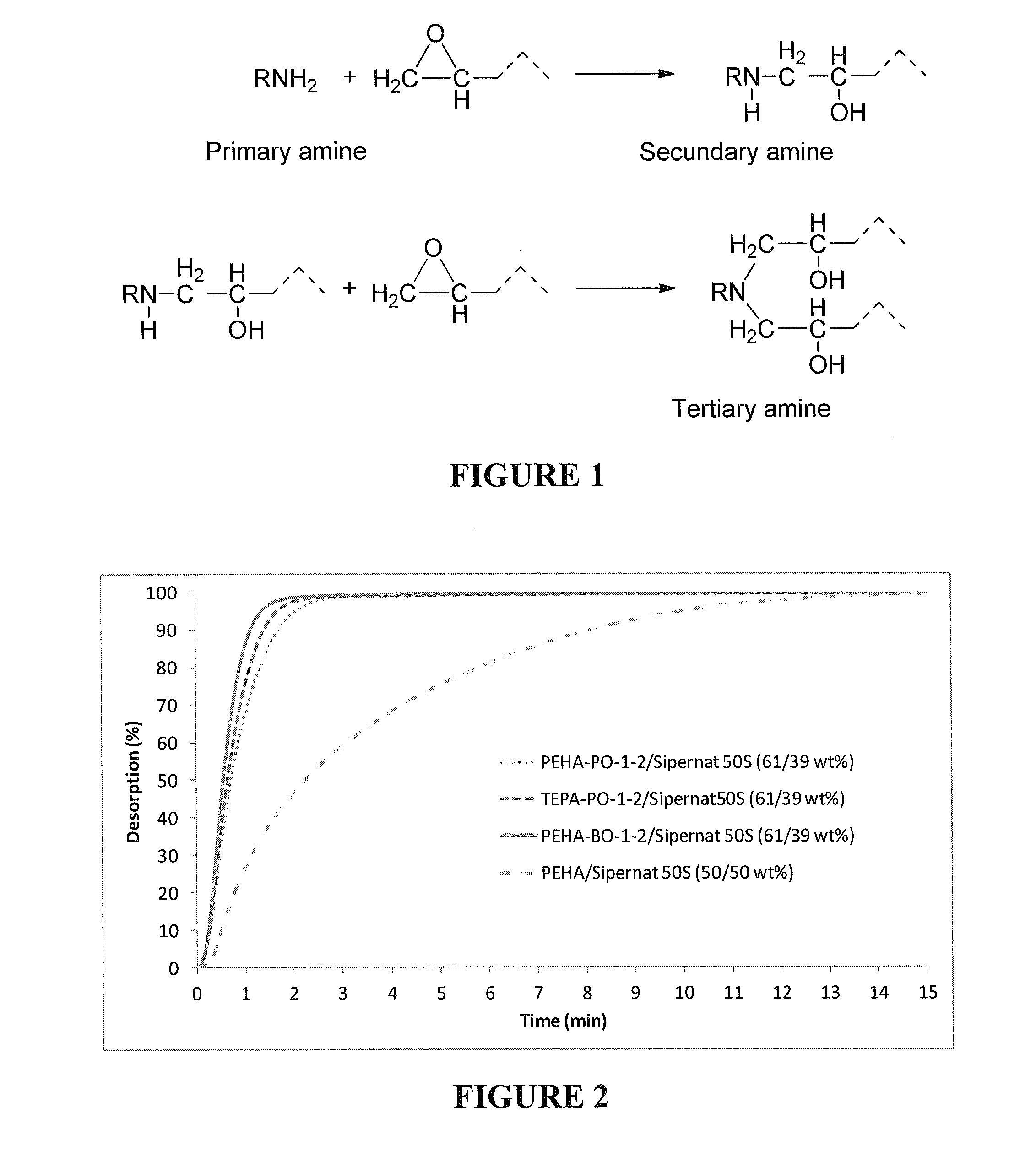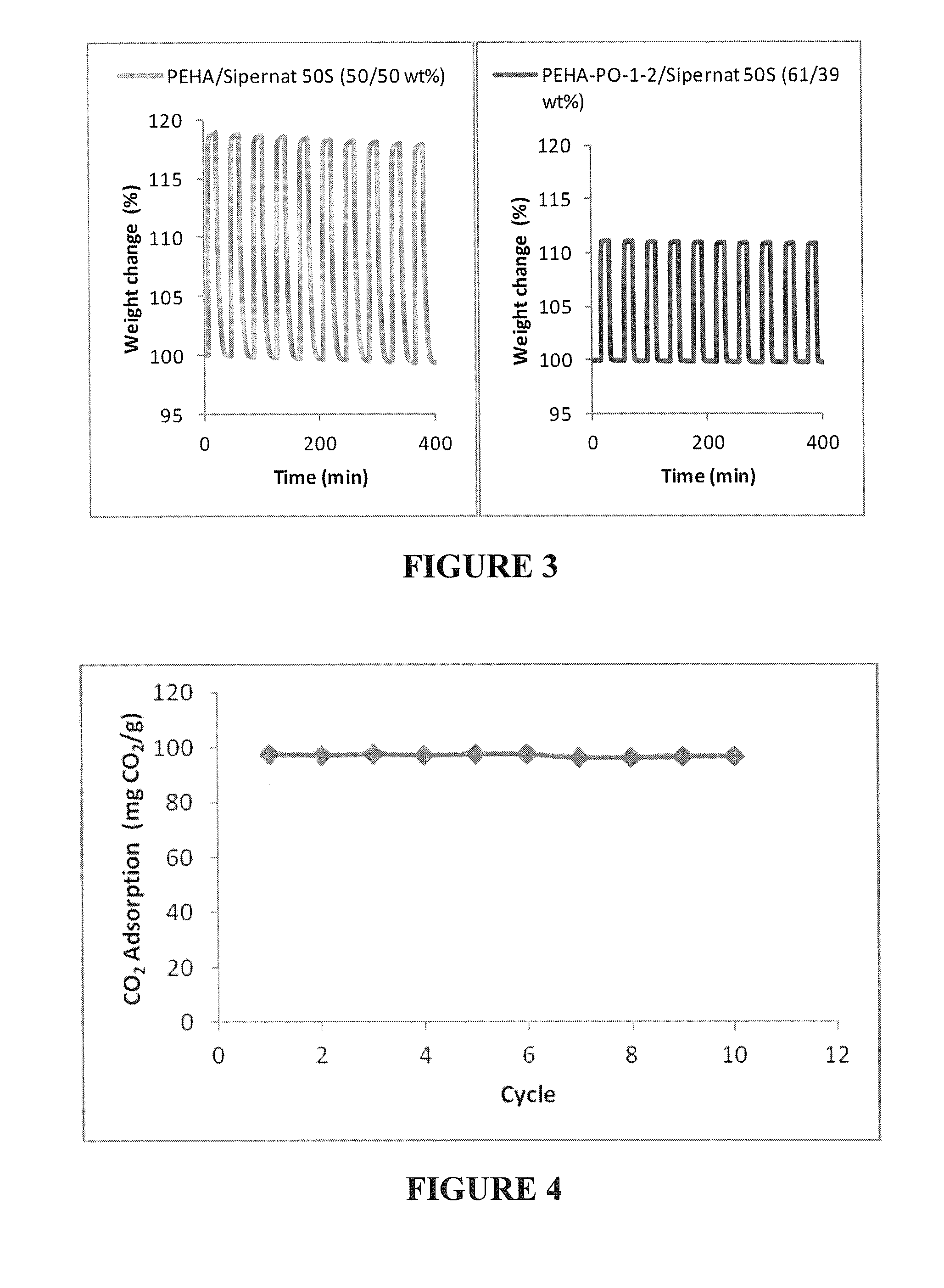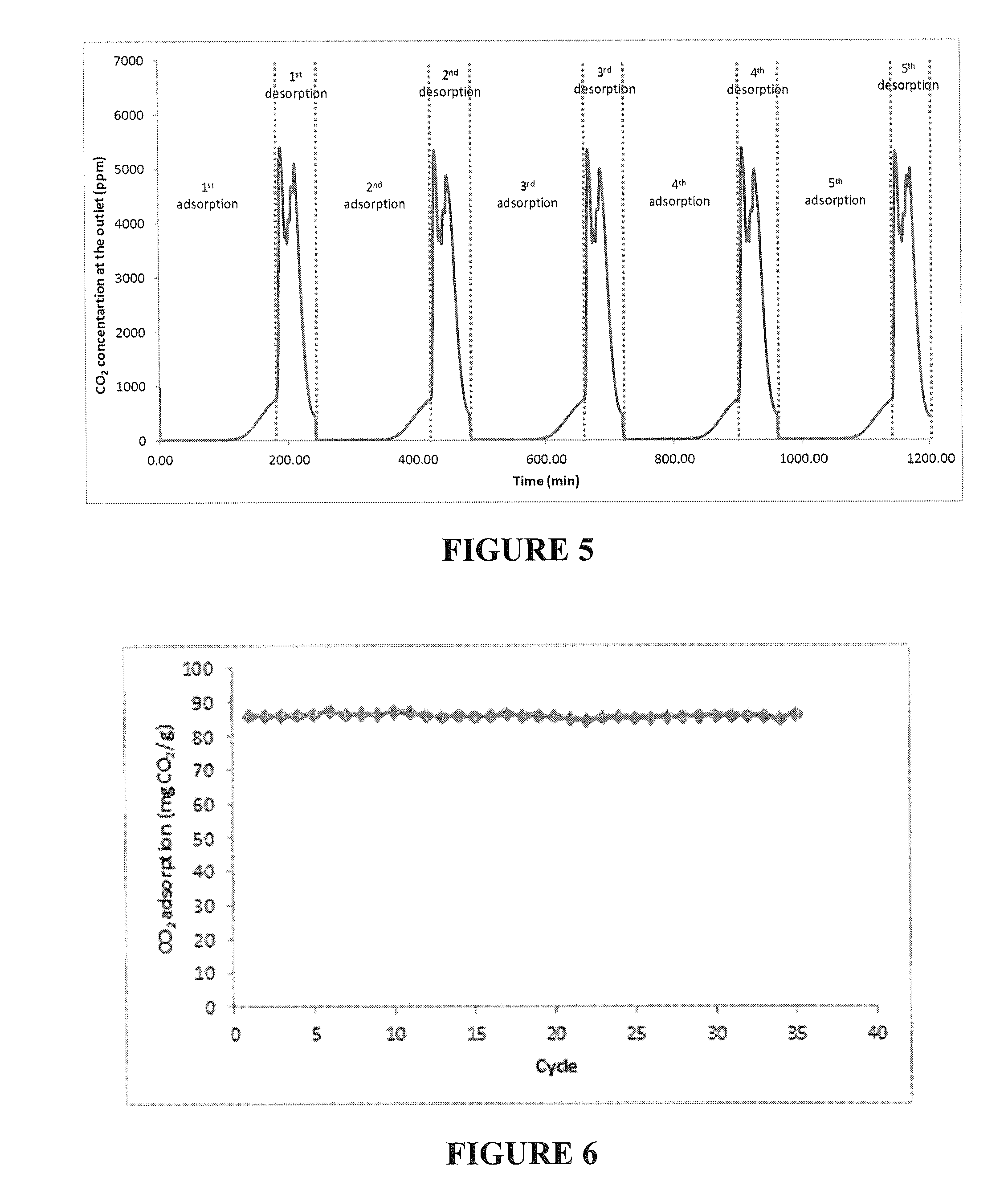Regenerative adsorbents of modified amines on solid supports
a technology of regenerative adsorption and solid support, which is applied in the direction of ether preparation, separation process, and other chemical processes, can solve the problems of large amount of heat required to regenerate aqueous solution, large amount of energy wasted during the regeneration process, and prone to corrosion and chemical degradation. , to achieve the effect of improving the reaction kinetics, increasing the molecular weight of these amines, and reducing volatility
- Summary
- Abstract
- Description
- Claims
- Application Information
AI Technical Summary
Benefits of technology
Problems solved by technology
Method used
Image
Examples
example 1
Preparation of a Regenerable CO2 Adsorbent
[0090]An adsorbent according to the invention is conveniently prepared in two steps.
Step 1: Preparation of a Modified Polyamine Species
[0091]A modified polyamine species based on pentaethylenehexamine (H(NHCH2CH2)5NH2, PEHA) and propylene oxide (PO) was prepared as follows. 10 g of PEHA (0.043 mol) was dissolved in 40 mL water. 5 g of PO (0.086 mol) was drawn with a syringe and then added drop-wise to the PEHA solution. The mixture was stirred for 20 hours at room temperature. After that, the temperature was progressively raised to 60° C. and kept at that temperature for 2 hours. The water was removed by rotary evaporator and followed by overnight vacuum (<1 mm Hg). The obtained product was a viscous yellow liquid. The modified polyamine is named PEHA-PO-1-2.
Step 2: Preparation of a Supported Polyamine Sorbent
[0092]A supported modified polyamine sorbent composed of 61 wt. % PEHA-PO-1-2 and 39 wt. % Sipernat 505 was prepared as follows. 3 g o...
example 2
Preparation of Adsorbent Based on Modified Polyamines and Precipitated Silica Sipernat 505 in “One Pot”
[0093]This example illustrates the preparation in “one pot” of a supported modified polyamine sorbent composed of 61 wt. % PEHA-PO-1-2 and 39 wt. % Sipernat 50s. 3.33 g of PEHA (0.0143 mol) was dissolved in 30 mL of water. 3.33 g of Sipernat 505 was suspended in 70 mL of water. The PEHA solution was then slowly added to the Sipernat 505 suspension under stirring to ensure good dispersion of PEHA on the support. The mixture was stirred (magnetic stirring 400 rpm) at room temperature for 2 hours. 0.0287 mol of PO (2 mL) was drawn with a syringe and then added drop-wise to the PEHA-Sipernat 505 mixture. The mixture was stirred for an additional 20 hours. After that, the temperature was progressively raised to 60° C. and kept at that temperature for 2 hours. The water was removed from the mixture by rotary evaporator and followed by overnight vacuum (<1 mm Hg). The supported polyamine ...
example 3
Measurement of CO2 Adsorption Capacity Using a PEHA-PO-1-2 / Precipitated Silica (Sipernat 50S) Adsorbent Placed in a Cartridge in a Flow System. CO2 Adsorption from a Mixture Containing 1000 Ppm CO2 and 50% Humidity for Air Quality Purposes
[0094]This example illustrates the removal of CO2 from a gas mixture containing 1000 ppm CO2 in air for indoor air quality purposes. The adsorbent used was PEHA-PO-1-2 / precipitated silica (61 / 39 wt % prepared in “one pot”) prepared according to example 2.
[0095]CO2 adsorption data were obtained using an all-glass grease free flow system. The adsorbent was first placed in round bottom flask and evacuated (˜30 mTorr) at 85° C. for 3 hours to desorb CO2 and water present on the adsorbent. After this pretreatment, 1 g of the adsorbent was placed in a straight glass tube between two glass wool plugs thermostated at 25° C. The adsorbent weight (1 g) after pretreatment was used for the later calculation of the CO2 adsorption capacities. For the adsorption ...
PUM
| Property | Measurement | Unit |
|---|---|---|
| Temperature | aaaaa | aaaaa |
| Fraction | aaaaa | aaaaa |
| Fraction | aaaaa | aaaaa |
Abstract
Description
Claims
Application Information
 Login to View More
Login to View More - R&D
- Intellectual Property
- Life Sciences
- Materials
- Tech Scout
- Unparalleled Data Quality
- Higher Quality Content
- 60% Fewer Hallucinations
Browse by: Latest US Patents, China's latest patents, Technical Efficacy Thesaurus, Application Domain, Technology Topic, Popular Technical Reports.
© 2025 PatSnap. All rights reserved.Legal|Privacy policy|Modern Slavery Act Transparency Statement|Sitemap|About US| Contact US: help@patsnap.com



